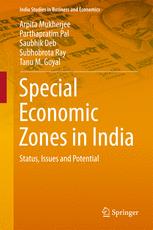

Most ebook files are in PDF format, so you can easily read them using various software such as Foxit Reader or directly on the Google Chrome browser.
Some ebook files are released by publishers in other formats such as .awz, .mobi, .epub, .fb2, etc. You may need to install specific software to read these formats on mobile/PC, such as Calibre.
Please read the tutorial at this link: https://ebookbell.com/faq
We offer FREE conversion to the popular formats you request; however, this may take some time. Therefore, right after payment, please email us, and we will try to provide the service as quickly as possible.
For some exceptional file formats or broken links (if any), please refrain from opening any disputes. Instead, email us first, and we will try to assist within a maximum of 6 hours.
EbookBell Team

4.0
46 reviewsThis book examines India’s ten years of experience developing Special Economic Zones (SEZs) and the performance of SEZs in the context of India’s growing international engagement, its endeavours to attract domestic and foreign investment in manufacturing and services and its aim to increase and diversify exports of goods and services. SEZs are industrial enclaves/clusters within a country that receive certain incentives and business facilitation benefits that are not generally available to the rest of the country. To facilitate private and foreign investment in SEZs, India introduced the SEZ policy in 2000, which was followed by the SEZ Act in 2005. After ten years under the Act, India now has one of the largest number of approved SEZs in the world and its SEZ policy remains heatedly debated, with a number of studies arguing both for and against it. Given this background, the book also identifies the challenges faced by SEZs in India and offers policy recommendations on how to make the SEZs an engine for India’s economic growth and development that can more effectively link the country’s manufacturing and services sectors to global value chains.